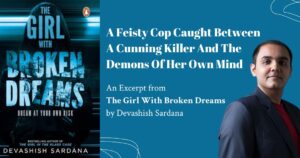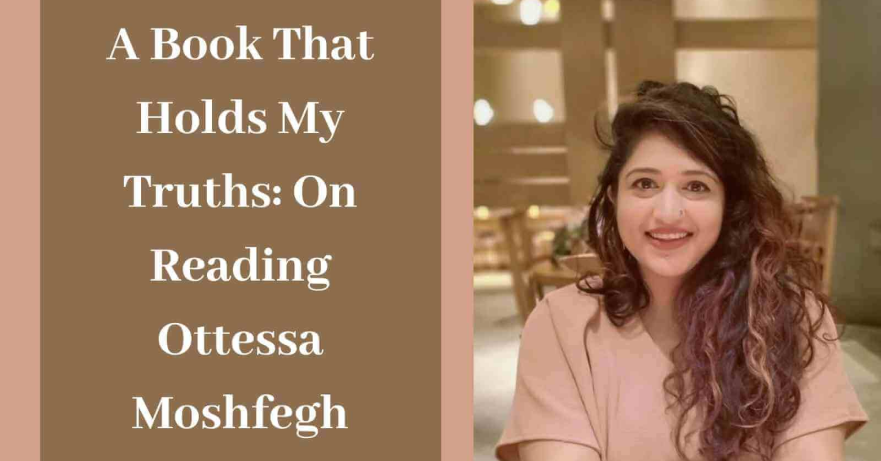Meet Mihir Vatsa: Writer And Editor
- By Michelle D’costa

Mihir Vatsa is a poet and writer from Jharkhand, India. He is the winner of the Srinivas Rayaprol Poetry Prize, a Toto Funds the Arts Award in Writing, and the Charles Wallace Fellowship at University of Stirling, UK. Mihir’s interest lies in the connections among landscape, literature, and writing, and his documentation work on his hometown Hazaribagh is a case study at Durham University’s heritage management programme. After a full-length and a chapbook of poetry, Mihir’s upcoming publication is a travel memoir on Hazaribagh from Speaking Tiger Books. Mihir presently lives in Dumka where he teaches English Literature at Santal Parganas College.
____
Your non-fiction book about Hazaribagh is upcoming from Speaking Tiger Books. Can you tell us about it?
Yes! I am excited for it. It is a travel memoir, an exploration of Jharkhand’s Hazaribagh Plateau, and articulation of my relationship with the land. It is definitely a special book, and I hope it will resonate with people who belong to places that are set in lesser-known landscapes in India.
How did your commitment to Hazaribagh begin? You had started a newsletter in 2017.
It goes much before 2017. I started travelling within Hazaribagh – district first, plateau later – in 2010. I was a student at Delhi University at the time and that distance pretty much transformed Hazaribagh from a physical town to a mental space. Before the newsletter, there was a large Facebook group. I had to discontinue it after the group outgrew its purpose. Before the group, there was a blog. Before the blog, there was a school project on Hazaribagh that I had made much earlier in school. The newsletter isn’t dead – it will be active again once I am able to spend more time in Hazaribagh, whenever that happens.
This commitment has several forms of realisation too. While travel remains an important narrative tool, there is more to me and Hazaribagh than good-looking places. I talk about Hazaribagh whenever and wherever I get a platform for it, my poems are heavily inspired from the plateau, I have worked with the district administration too on their projects. I give an annual talk at Durham University’s Archaeology Department on Hazaribagh’s heritage. I do impromptu surveys in villages I go to, speak at gram sabhas, hold nature walks, write status updates on social media. What I am trying to say is that Hazaribagh and I are more than literary. There is an intimacy built in between us which makes committing easy.
What do you hope readers will take away from the book?
For my Hazaribagh readers, a sense of grounding. An insight into how the place came to be, how our favourite landmarks came up, what all lie open in the plateau for us to experience. For others, a new landscape, local history, lots of waterfalls, lots of sky and sunshine, provinciality, friendships forged by land.
—
Your chapbook ‘Wingman’ was released along with four chapbooks by other poets. How did readers respond to it as a collection?
Yes, it was. We printed the box-set in a limited-edition run and it was sold out. A positive response, I would say.
How do you think readers in India respond to a ‘chapbook’ Vs a full-length collection and do you think they are really aware of the distinction?
A chapbook is a poetry collection which is just shorter than a poetry volume. So instead of fifty to hundred poems that usually make a volume, you have fifteen to forty poems in a chapbook. The poems may be fewer but on a specific theme. The chapbook, then, suits such collections. The poems may not be on a specific theme and still the form endures. Considering that Indian poetry in English anyway has a niche readership, I don’t think people who buy poetry in India buy a book for a paisa-vasool experience: these many pages for this much money, these many pages for that much, I don’t think we operate in this way. It is true that people, perhaps among older generations, may not know the difference between a chapbook and a full-length, but the younger ones – who aim to publish widely and globally – do. Poetry matters – if it’s good, it will be read, whether by elders or youngsters, in full-length or chapbook. People who buy poetry volumes will buy chapbooks too, because poetry readers do not quantify the experience into a set number of poems.
—
‘Painting that red circle white’ was your first book. What inspired the title?
The title is taken from the text of one of the poems in the book (“Konar, 1995”). The end clause of the concerned sentence was “like an artist painting a red circle white”. In this clause and specifically in the phrase that became the title, I saw a process of revision, editing and layering. Memory is a major component in the poems in Painting. This idea of writing an event over an existing layer of memory resonated with many poems in the collection, whether they be my mother poems or travel poems or experiential poems, and that’s how the title came to be.
Your book came out in 2014. It is divided into 4 sections. The thought process behind this?
Yes, it did – 2014 now seems like a long time ago. The four sections were not purposefully divided into separate groups, save for section two which contains the mother poems. However, there were certain similarities that I felt among some poems and other resonances among others. The first section is titled “In Divisions We Adjust” – again, the title was sourced from a poem in the segment. The first section lays out these divisions – Hazaribagh/Delhi, provincial/urban, friendship/kinship, academy/home, writing/reading.
The second section “Till Letters Burn Her Face” contains my mother poems, the third “In Segments of Time” expands of spatio-temporal changes that were happening around me at the time. The final segment “Of Things Dying in Winter” address the breakdown in relationships – romantic, familial, friendship. I must say that my explanation here is not immune to layering either. It’s convenient to be six years away from the book’s publication and approach your queries retrospectively.
Do you see your poetry evolved from 2014 and when are you planning another collection?
Yes, I do. I mean, for first, the frequency of writing has gone down – I am not as prolific as I used to be. There are also newer themes and ideas that I am drawn towards. You must understand that Painting was written when I was at the university, finishing my Master’s degree. Things have changed dramatically after that. From a student, I have become a teacher. From dwelling on the ideas of family, time and memory in Painting, I now find myself being attached more deeply to the landscape of my homestate Jharkhand, wanting to articulate it through writing. This attachment was there before too, but it was qualified by people in the poems. I want to look at Jharkhand without feeling the need for a third party, and though I am writing fewer poems presently and it may appear that I have detached myself from poetry, it is really not the case. I have simply detached myself from the culture of Indian poetry in English, which I find intolerably urban, and not the poetry itself. I don’t know when the next collection will be out – I am taking my time and not rushing into it. I am focused more on my Hazaribagh book at the moment which is due to appear this year.
Can you tell us how the poems about your mother came about?
My mother poems are not particularly about my own mother. Though the poems do employ the phrase “My Mother” in the titles, it is merely a stylistic device which maintains cohesion among the poems in the segment. The initial mother poems were inspired by my mother but soon “My Mother” became also about other mothers living in small towns in India. I wanted to look at how middle-aged or ageing women assert their individuality and navigate through the provincial life. The kind of choices they make based on their material realities, the implications of those choices in the intimacy of a mother-son relationship.
Why the need for a personal essay in the beginning of the book?
Assertion, simply. Assertion of the fact of me being a poet from Jharkhand who writes in English. Assertion of my own journey from a low-scoring student of English language to becoming a poet who now feels at home with English. There, I think, is also an aspirational value to the essay – if I can do it, many others can too. Through the essay, I also got the chance to speak directly with people who belong to Jharkhand and tell them my story. Some readers felt that the essay was better than the poems, there was one woman who confessed to crying after reading it.
—
You have been editing Vayavya since it started in 2011. How has the journey been so far?
It’s been really nice, actually. I didn’t think, at the time I started it, that the magazine would sustain for this long. It’s a miracle that it has, given the turns my own life keeps taking. Fortunately, I have been helped by friends – previously Alex and now Shalim – who have taken up various editorial responsibilities every now and then and have lightened the submission pile. One of our challenges is to adhere to the response period but even that goes haywire sometimes. We are small, minimalistic, and we know clearly what we want. Vayavya is special because it values promising work from poets who are just starting out in their career.
What annoys you the most about submissions?
Not reading the submission guidelines before submitting. There is no excuse for it.
In your interview with Usha Akella, you say, ‘The importance of the critique is massively unrealised in our country, and many of us still feel personally attacked by good-intentioned criticism.’
Have you encountered this with young and old poets, both?
It does happen, and mostly because poetry has been mystified to a degrading extent through the lazy rhetoric of “authorial intent”, “deep feelings” and other corny trivialities. Bad writing is not authorial intent – it cannot be – and even if it were, I am not the kind of editor who gives in easily. Elder poets are set in their own ways, younger poets have been taught by elders who, again, are set in their own ways. I expect the younger lot to unlearn actively, but there have been instances of resistance from young poets and understanding from older ones. Often they fail to realise that critiquing and criticising are different things. If they were the same, there wouldn’t be the need for two separate words.
You also say, A vacuum also exists now, and it is of the loss of the editor-poet relationship, something which today sounds almost mythical.
Can you elaborate?
Well, sometimes you get submissions which may not be perfect but there is enough merit, enough sincerity, which warrants some editorial intervention along with a willingness on the submitter’s part to look at the suggested edits. This kind of creative, constructive collaboration between a poet and an editor is essential for the emergence of a new generation of poets. It shows the emerging generation that it is in good, empathetic hands. Poems that arrive 80-90% ready (vague estimate, sorry) and if they come from younger poets wishing for their first publication, then I feel that it falls upon the editor to really edit the text for publishing. I understand that time is precious, and with every passing day, it gets more elusive. What I am advocating is for the editor to be generous with that slight nudge, which may just take the poem to its published existence. Subjectivity in decision-making will be there, after all an editor is a human being. Similarly, the poet concerned may choose to accommodate the edits or reject them. The dynamic, however, shouldn’t end.
—
Poetry collections you re-visit.
Life and Times of Mr. S by Vivek Narayanan. Every time I read the book, I find it different.
How important is it to read good poetry to write good poetry?
Very! I cannot stress this enough – as a poet, as an editor, as a teacher of literature.
Why poetry, not fiction?
I don’t think I am there yet. Fiction is a different paradigm – perhaps in future.
Your name is Mihir Jha. How did ‘Vatsa’ come about?
It’s such a silly story, and really, the name is a mouthful when you expand it fully: Mihir Kumar Jha. But returning to your question – I was looking for a pseudonym when I wrote my first poem in class ninth. The idea of a pseudonym was exciting – it seemed like such a cool trick. I liked the word Vats, which is my gotra (clan?) according to Hindu tradition, so I replaced my surname with it. Then I added an the letter a in the end, so it became Vatsa. This was years ago – 2006 or 07. I use it still because I like the sound of Mihir Vatsa, two-two syllables in both first name and the last.

Written by Rheea Mukherjee
Rheea Rodrigues Mukherjee is the author of The Body Myth (Unnamed Press /Penguin India 2019) which was shortlisted for the Tata Literature Live First Book Award. Her work has been published and featured in Scroll.in, Southern Humanities Review, Los Angeles Times, Huffington Post, Buzzfeed, Vogue India, Out of Print, TBLM, and Bengal Lights, among others. She co-founded Bangalore Writers Workshop in 2012 and currently co-runs Write Leela Write, a Design and Content Laboratory in Bangalore, India. Rheea has an MFA in creative writing from California College of the Arts.









